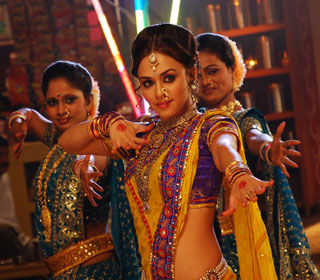Indian classical dance
Bharatanatyam
Kathak
When you gracefully combine Katha (story), Abhinaya (action) and Updesha (moral) you get to experience the zeal in Kathak. Dancers would learn the art of presenting the various poses with proper expressions and body movements while being swift on their feet work.
It will be a truly vibrant and visually stunning display of dance and drama not to be missed! Kathakali originated in the temples of Kerala over 500 years ago and embraces drama, dance, music, visual arts and ritual to create one of the most exciting and powerful forms of theatre.
Together they will reveal a 2000 year old sign language, first used in temple rituals and centuries later in Kathakali drama.
Extraordinary costumes and make-up transform the actors into gods, kings, devils and princesses to tell their stories through the exotic world of theatre.
‘They perform with amazing grace and dignity. Intense, hypnotic and spectacularly beautiful’… The Daily Telegraph
Bharatanatyam
Students can learn the unique style and substance of Bharatanatyam dance to the accompaniment of Carnatic music played in the backdrop. Male and female dancers are trained to rhythmically coordinate their movements. In this dance form, one gets to understand the significance of blending bhava, raga and taala.
Bharatanatyam has a divine origin. Devas asked Brahma to create a Veda that would be understood by the Sudras, as Kali Yuga was nearing: "When the universe was overcome by desire, greed, jealousy and anger, when people became slaves of pleasure and pain, Brahma was moved to create a form of entertainment seen and heard and understood by everybody at the same time, as people could no longer understand the mystic and ambiguous scriptures".Bharata natyam was created "not merely for pleasure, but to embody the cosmic relationshios and expressions (bhava) for all the worlds. So this performing art follows the worlds' movements in all activities and states: work and leisure, calm and laughter, fight and wars. It will confer righteousness onto the righteous, a moral restraint for the unruly, and discipline for the those who are guided by rule. It will teach wisdom both to the ignorant and the learned. It will provide entertainment for kings, and it will console the miserable ones. Natya will express all the moods and passions of the soul. It will incorporate all kinds of the deeds: the noble, the mediocre and the mean"
Thus Brahma created the the Fifth (Panchama) Veda, or NatyaVeda, a quintessence of the main four Vedas, by combining Pathya (words) of Rigveda, Abhinaya (communicative elements of the body movements, cf. mime) of Yajurveda, geetham (music and chant) of Samaveda, and rasam (vital sentiment and emotional element) of Atharvaveda. Then Brahma handed NatyaVeda to rishi Bharata to write it down and spread it in the material world. Bharata-guided the demigods (Gandharavas and Apsaras) in performing natya, nrtta and nrtya before Shiva. Natya Shastra came to be the fundamental authority on the technique of classical Indian dances, especially Bharatanatyam and Odissi, as well as Kuchipudi and Mohiniattam. Some prefer to belive the term "Bharatnatyam" owes its name to rishi Bharata.
Kathak
When you gracefully combine Katha (story), Abhinaya (action) and Updesha (moral) you get to experience the zeal in Kathak. Dancers would learn the art of presenting the various poses with proper expressions and body movements while being swift on their feet work.
It will be a truly vibrant and visually stunning display of dance and drama not to be missed! Kathakali originated in the temples of Kerala over 500 years ago and embraces drama, dance, music, visual arts and ritual to create one of the most exciting and powerful forms of theatre.
Together they will reveal a 2000 year old sign language, first used in temple rituals and centuries later in Kathakali drama.
Extraordinary costumes and make-up transform the actors into gods, kings, devils and princesses to tell their stories through the exotic world of theatre.
‘They perform with amazing grace and dignity. Intense, hypnotic and spectacularly beautiful’… The Daily Telegraph















